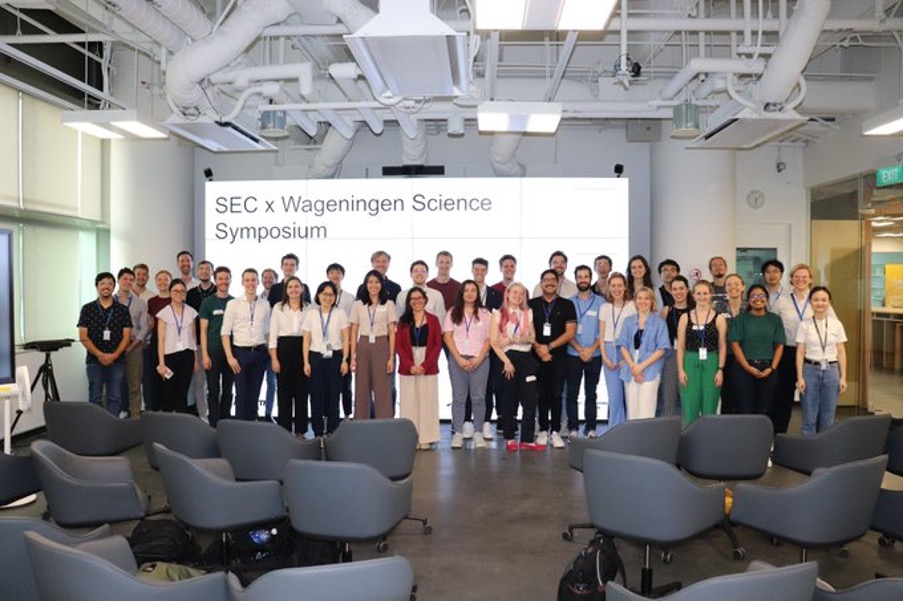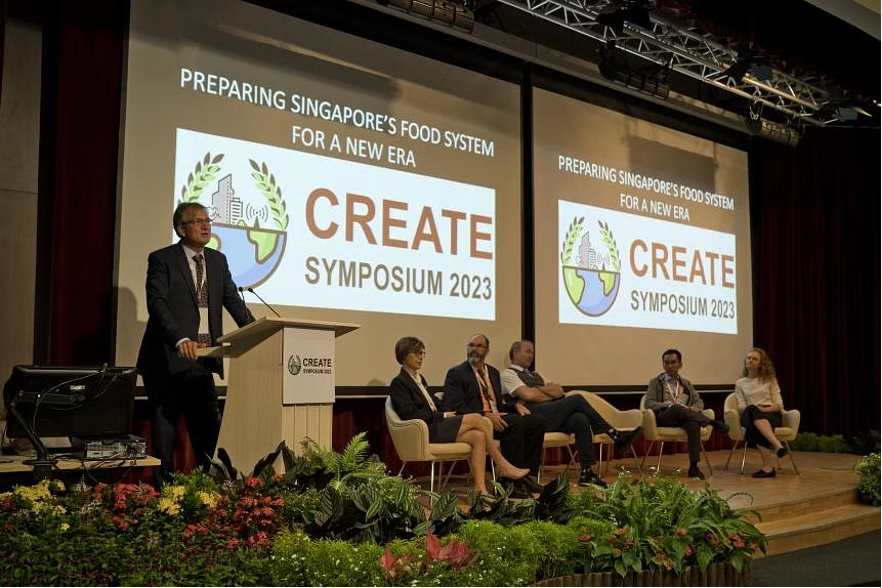Developing new microalgae-based food products
Updates from the Novel Protein for Food and Feed Flagship Project include the development of “calamari” rings made from microalgae and mung bean protein as well as a study on Singaporean consumers’ acceptance of microalgae-based foods.
One of the innovation areas of the Novel Proteins for Food and Feed Flagship Project focuses on identifying, designing and validating processes to enable microalgae derived proteins for food applications. Many developments occurred in the last months, including creation of novel microalgae-based foods as well as a study on Singaporean consumers’ acceptance of such foodstuffs.
Print to plate: 3D printed seafood
Many plant-based protein products have entered the market in recent years; however, seafood alternatives are still have to find. Taking in account currently rates of overfishing, unsustainable aquaculture practices, in addition to the consumer demand for seafood in Asia, development of plant-based alternatives is a timely venture.
Researchers at National University of Singapore (NUS), part of the Urban Microalgae Protein Production project team at Singapore-ETH Centre, have recently created calamari rings using microalgae and mung bean protein. Using a 3D printing method, they replicated the texture of seafood by using high-protein ink derived from microalgae and mung bean derivatives. The result are ‘rings’ that can be fried, baked or sautéed. The product is ideal for people allergic to mollusks. The next step is to optimise the texture, flakiness, and elasticity of actual cooked calamari rings, before further developing the product for commercialization in the coming years.
New study on consumer acceptance of microalgae-based foods
A new study from the Consumer Behavior Group at ETH Zurich investigated the acceptance of microalgae-based food products. The findings of a survey of nearly 600 consumers in Singapore suggests that a microalgae-based meat/fish substitute appears to align with consumer expectations. The researchers report that framing microalgae as sustainable and innovative can increase acceptance, and future product development steps need to take price and sensory variables, like taste, into account.
external page Novel microalgae-based foods: What influences Singaporean consumers’ acceptance? by Wasmann, B.; Hartmann, C,; Siegrist, M.
Exchanging knowledge to create more sustainable, resilient food systems
The Urban Microalgae Protein Production Project at Singapore-ETH Centre, held its first SEC x Wageningen Science Symposium in November. The researchers exchanged current results from work focused on bioengineering, microalgae, and black soldier fly larvae to secure access to nutritious, affordable food. Doctoral students and postdoctoral researchers from Singapore-ETH Center, ETH Zurich, Wageningen University, TUMCREATE, and National University of Singapore shared their expertise in 12 talks over three sessions, with the event ending with a networking session.
Earlier in summer, researchers from Singapore-ETH Centre took part in the CREATE Symposium 2023, a showcase of the best research developments from the National Research Foundation (NRF) Singapore's Campus for Research Excellence And Technological Enterprise (CREATE) Hub. Featuring keynotes, exhibits, and demos, the symposium included a panel discussion on Singapore’s food system with Dr. Iris Haberkorn. Read more

